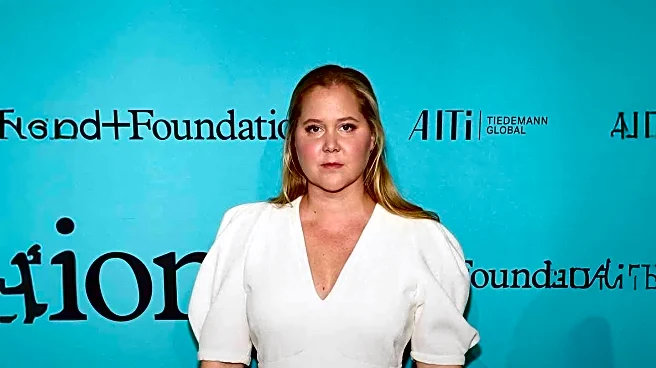What's Happening?
The article explores the differences between disordered eating and eating disorders, emphasizing the subtlety and prevalence of disordered eating behaviors. Eating disorders affect nearly 30 million Americans
and can be fatal, while disordered eating is more common and often normalized by diet culture. Disordered eating includes behaviors like skipping meals, overexercising, and following restrictive diets, which can lead to serious physical and emotional consequences. Experts highlight the importance of recognizing these behaviors and understanding their impact on mental health and body image.
Why It's Important?
Understanding the distinction between disordered eating and eating disorders is crucial for addressing mental health and promoting healthy eating habits. Disordered eating can serve as a gateway to more severe eating disorders, making early recognition and intervention vital. This knowledge can empower individuals to seek help and adopt healthier relationships with food, potentially reducing the prevalence of eating disorders. The article also sheds light on the societal influences that perpetuate disordered eating, encouraging a shift towards body positivity and intuitive eating.
What's Next?
As awareness of disordered eating grows, there may be increased efforts to educate the public and promote healthier eating practices. Healthcare providers and mental health professionals could develop more resources and support systems to help individuals struggling with these issues. Additionally, there may be a push for policy changes to address the societal factors contributing to disordered eating, such as media representation and diet culture.
Beyond the Headlines
The discussion around disordered eating and eating disorders highlights broader societal issues related to body image and mental health. It raises ethical questions about the role of media and culture in shaping perceptions of beauty and health. This could lead to long-term shifts in how society approaches wellness and self-care, fostering a more inclusive and supportive environment for individuals of all body types.











